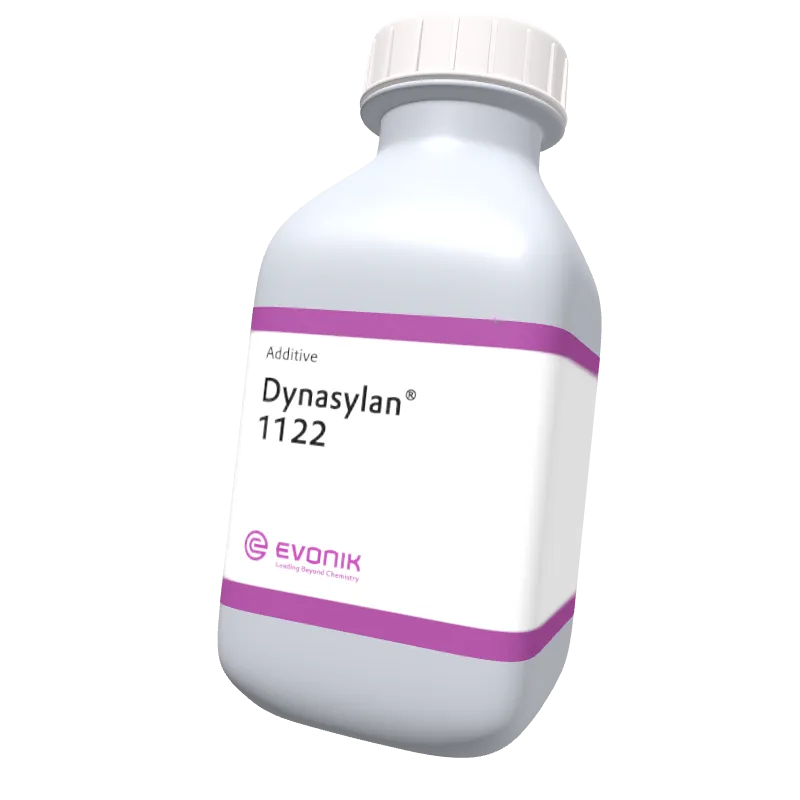Dynasylan® 1122
Dynasylan® 1122 is a bifunctional organic compound in which the silicon-functional ethoxy-groups hydrolyze in the presence of water to form reactive silanols, which can be bonded to an inorganic substrate; the organophilic amino group can interact with a suitable polymer. Due to 6 hydrolyzable substituents present in one molecule, Dynasylan® 1122 is exceptionally suitable to form highly crosslinked networks on and between substrates and in organic matrices.
The hydrolysis of Dynasylan® 1122 in water takes place by acidic catalysis (e.g. formic or acetic acid at a pH of 2-3). In order to achieve solubility in organic solvents simply add 2-4 wt.-% of water per wt.-% of Dynasylan® 1122. Upon stirring for 5h the solutions are ready for use.
Examples of suitable inorganic substrates are glass, glass fibres, glass wool, mineral wool, silicic acid, quartz, sand, cristobalite, wollastonite and mica; also suitable are aluminium hydroxide, kaolin, talc, other silicate fillers, metal oxides and metals. Examples of suitable polymers are epoxy resins, polyurethanes, phenolic resins, furan resins, melamine resins, PA, PBT, PC, EVA, modified PP, PVB, PVAC, PVC, acrylates and silicones.
The secondary amino group in Dynasylan® 1122 provides high basicity at somewhat lower reactivity compared to primary amino groups. This is of major advantage in e.g. adhesives and sealants where the silane is added to the polymer matrix: Homogeneous distribution and bonding/networking of Dynasylan® 1122 to the inorganic filler can commence unless bonding to organic materials (e.g. polymers) will proceed.
Moreover, Dynasylan® 1122 has been successfully used as a component in aqueous PA- and PU-sizes for glass fibers.
Product information
Type
Additive
Sub type
Adhesion
Markets
Technologies
High solids (solventborne)
Radiation curing systems
Solventborne
Solventfree
Manufacturer

Availability
No guiding formulations available
As our platform is growing, new guiding formulations may be added in the future.
